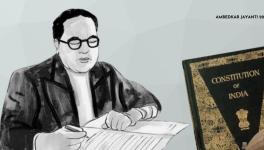Restoration of Old Pension Scheme: Benefits and Financial Viability

Representational use only.Image Courtesy: Picpedia
The objective of social security is to ensure a minimum standard of living for every worker without suppressing his/her personal abilities and assist him/her in times of old age, sickness, unemployment, and other contingencies. In India, the provision of social security is enshrined in the Constitution as one of the Directive Principles of State Policy, which is also recognised by the judiciary as a part of the Fundamental Rights. This constitutional mandate has been operationalised through various labour legislations on social security, including pension schemes. The Government of India shifted from the Old Pension Scheme (OPS) to the New Pension System (NPS) for new employees who joined services after December 31, 2003, which was also gradually adopted by state governments in respect of their employees by issuing notifications on various dates. Now, the restoration of OPS has become a raging political issue with the decision of the governments of Rajasthan, Chhattisgarh, Punjab and Himachal Pradesh to switch back to OPS for their employees.
However, this demand is opposed on the ground that OPS is not financially viable for state governments. Against this backdrop, this article seeks to understand the feasibility of restoration of OPS to all public sector employees and proposes that it can be restored without disturbing the fiscal situation of the Centre and states.
Number of Public Sector Employees
Before analysing government expenditure on pensions, a brief overview of employment patterns in the public sector in India is necessary as future retirements directly correspond to the past recruitment pattern. The data available in the public domain indicates that there is a declining trend in public sector employment, as total employment decreased from 190.6 lakhs to 176.1 lakhs during the period 1990-91 to 2011-12. The segregated data on public sector employment is not available in the public domain after the year 2011-12. The strength of public sector employees, including Centre and state is mentioned in the following graph.
Source: Handbook of Statistics on Indian Economy, Reserve Bank of India
The above table indicates that the absolute number of employments in the public sector decreased from 190 lakhs to 176 lakhs whereas the population of India increased from 838 million to 1210 million between 1991 to 2011. In other words, the total public employment decreased by 7.36% whereas the population increased by 44.39%. The above data can be represented through the following figure for sake of brevity.
Source: Handbook of Statistics on Indian Economy, Reserve Bank of India
As the data on public sector employment after 2011-12 is not readily available in the public domain, the article has been corroborated with the number of subscribers of NPS in recent years. NPS is mandatory for central government employees from January 2004 onwards, and by 2013, this was adopted by almost all states for their employees, except West Bengal. Therefore, the year-wise changes in NPS subscribers will provide a clear picture of the trend of employment in the public sector (Centre and state) for recent years, which is shown in the following Table and Figure.
Table 1: NPS Subscribers under Central and State Government
Source: NPS Trust. Data as on February 28, 2023
The NPS subscribers’ data mentioned in the table above also indicates the declining trend of public sector employment in recent years, as NPS is mandatory for government employees from January 1, 2004 onwards. Under the central government, 1,85,000 new recruits joined in the year 2011-12, and this number decreased to 1,07,825 in 2020-21. Similarly, under the state governments, 5,74,000 new employees joined in 2011-12, which decreased to 4,36,482 in 2020-21. Thus, the annual growth rate of NPS subscribers working under central and state governments are declining which is depicted in following figure.
Source: Calculated by the author using data available at NPS Trust
Number of Pensioners
It is to be noted that authentic recent data on the total number of pensioners under the central government and state governments are not readily available in the public domain. However, for broad estimation purposes, the number of pensioners under the central government can be taken from the report of the Sixth and Seventh Central Pay Commission (CPC). The strength of pensioners under the central government, as given in the last two CPC reports, are presented below:
No. of Pensioners under Central Government (Number in Lakhs)
Source: Report of 6th CPC for 2004; Report of 7th CPC for 2014; and Pensioner Portal for 2021.
The above table shows that the total number of pensioners has increased significantly between 2004 to 2021. The data also indicates that the growth rate of pensioners at the aggregate level was higher during the later period i.e., from 2014 to 2021. However, if we analyse the increase in civilian pensioners, consisting of central government Civil, Railways and Post, the compound annual growth rate of pensioners has declined during the period 2014 to 2021 in comparison to earlier period i.e., 2004 to 2014 even though there is an increase in life expectancy. Though number of pensioners under state governments is not readily available in the public domain, considering the situation of civil pensioners under the central government, it appears that rate of growth of pensioners would also be declining in states. Thus, from this analysis, it is evident that the growth rate of pensioners under state governments, as well as the central government, would decline in the future because of the current trend of declining public sector employment which started during the 1990s. It is pertinent to mention that OPS is still available to Defence employees, therefore the article focuses on data of civil pensioners.
Expenditure on Pension
The OPS is generally opposed on the grounds that it will create an unsustainable debt burden on future generations. Against this backdrop, this section of the article tries to assess the fiscal burden of the Centre and states on pension expenditure based on data available in the public domain.
Table: Pension expenditure on ex-public sector employees as proportion of GDP (in %)
In order to calculate the aforesaid expenditure on pension in proportion to Gross Domestic Product (GDP), data with respect to pension expenditure has been collected from Anand, M. K., & Chakraborty, R. (2019), and GDP at market price has been taken from RBI’s Handbook of Statistics. The above table on pension expenditure indicates substantial growth in expenditure on pensions, from 0.21% of GDP in 1990-91 to 1.98% of GDP in 2010-11, which was the result of the implementation of the Sixth CPC, which recommended a significant increase in pension w.e.f. 01.01.2006. After a sudden increase in expenditure on pensions in 2008-09 and 2009-10, the expenditure almost stabilised from 2010-11. It is further noted that the Seventh CPC did not recommend a significant increase in the rate of pension from existing levels. Thus, expenditure on pension by Central government and state governments was stagnant around 0.8% and 1.7% of GDP during 2010-11 and 2015-16, respectively.
Fiscal Viability of OPS
The above discussion clearly indicates that the combined pension expenditure of the Centre and states, including defence employees, would be around 2.5% of GDP, which is expected to decline in the future due to gradual decline in number of public sector employment. Therefore, if the Centre and states are able to provide pension under OPS without any strain till date, they can also continue with the same in the future. However, some recent literatures and media reports have criticised the demand for restoration of OPS on the grounds that pension expenditure constitutes a significant proportion of the revenue expenditure of states. It is also argued that revenue expenditure does not result in the creation of assets, therefore, high revenue expenditure impedes developmental efforts. This argument is not valid, as it is necessary for promoting social welfare and inclusive growth. Moreover, this pension will contribute towards the demand-led growth of the country. Therefore, a welfare country like India should think of expanding coverage of guaranteed pension instead of decreasing the scope of pensions.
The OECD countries spend an average of approx. 2% of their GDP on pensions for civil servants and other public-sector workers, whereas countries like Austria, Belgium, France and the UK spend much higher than the average 2% of GDP. Therefore, the expenditure on pension in India cannot be considered very high, given that health infrastructure and old-age support system is relatively weak in India.
If the government still thinks that they do not have sufficient revenue to fund the pension expenditure, they can generate it through changes in fiscal and monetary policies. For example, the proportion of direct tax in total tax revenue is still at the lower level in India which can be increased; corporate tax, which was decreased recently may be increased again and at the same time, income tax net can be increased to create revenue for funding pensions. In addition, the government may think of mobilising resources through wealth and property taxes.
In this regard, it is also to be noted that the states demanding restoration of OPS have not publicly issued any guideline explaining procedure to return to OPS. The media report mentions that states like Rajasthan and Chhattisgarh have requested Pension Fund Regulatory and Development Authority to return the NPS fund of their respective employees. Thus, there is still uncertainty as to how the NPS fund will be used for providing pension benefits to employees if OPS is restored.
The author is an assistant professor at the L S College, Muzaffarpur, Bihar.
Get the latest reports & analysis with people's perspective on Protests, movements & deep analytical videos, discussions of the current affairs in your Telegram app. Subscribe to NewsClick's Telegram channel & get Real-Time updates on stories, as they get published on our website.
























